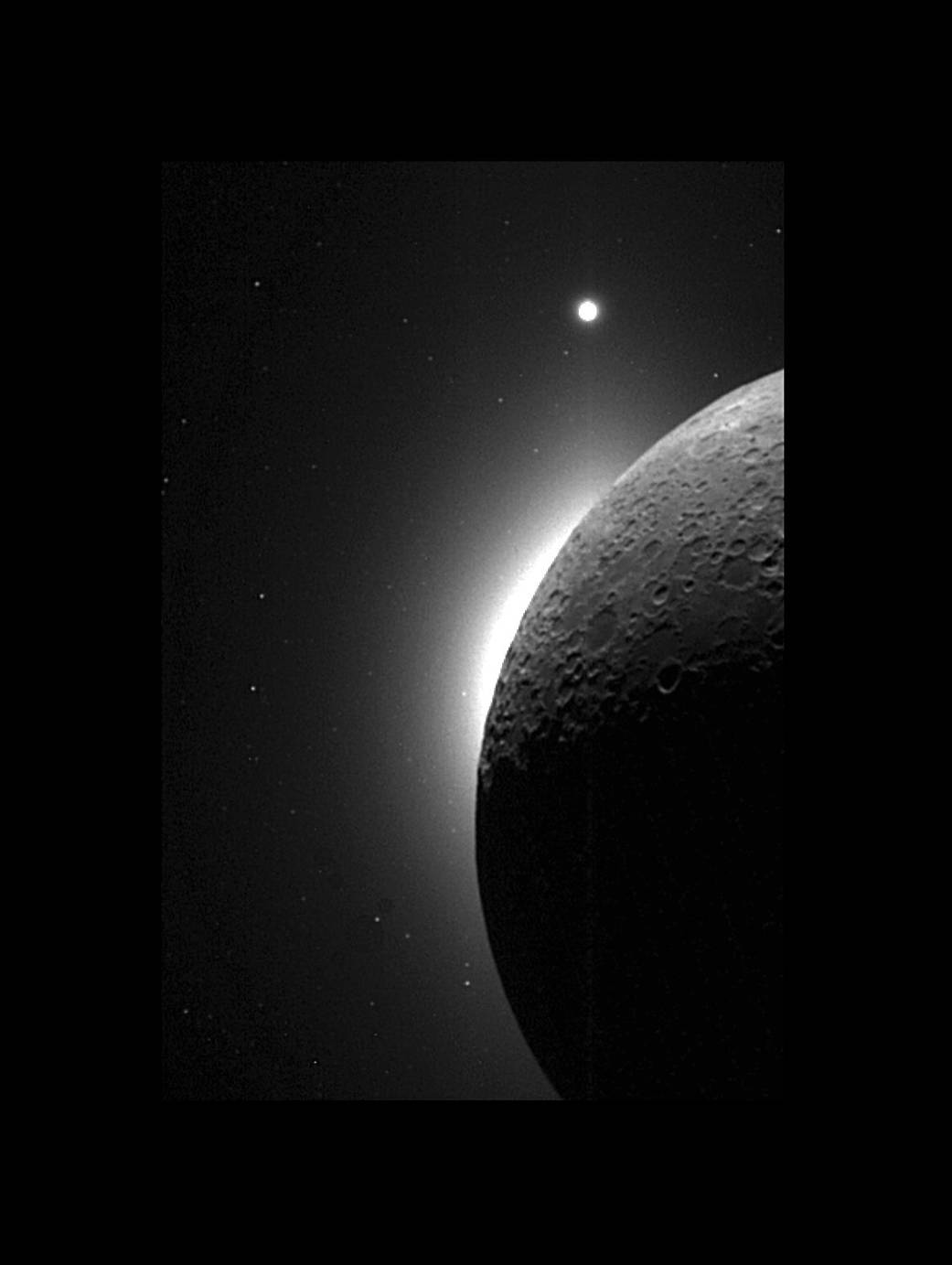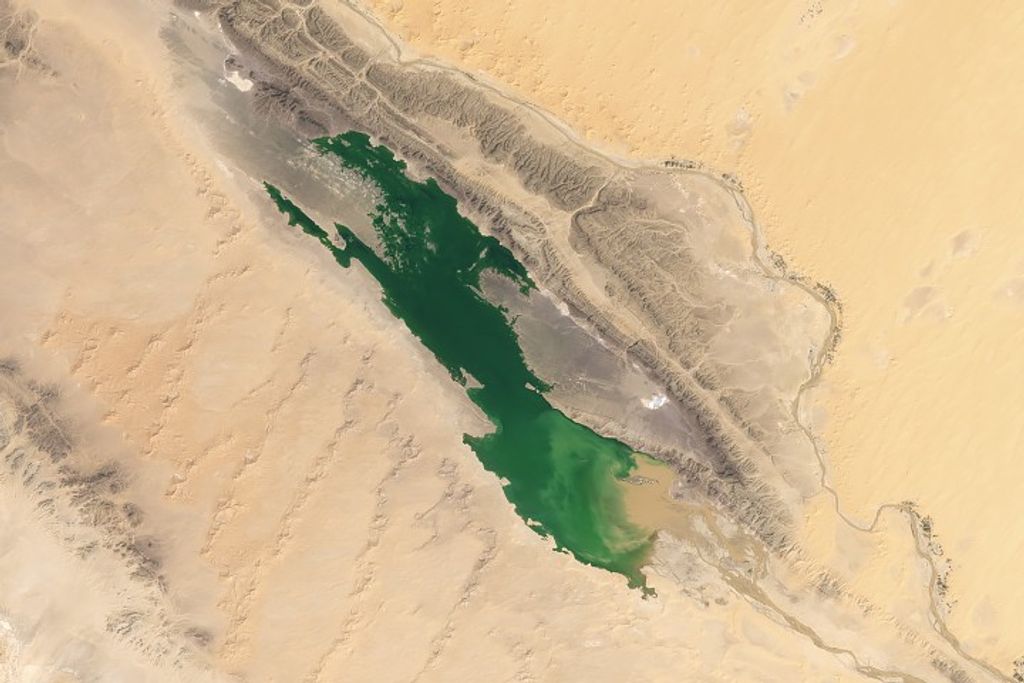
In 1994, during its flight, the Clementine spacecraft returned images of the moon. In addition to the geologic mapping cameras, the Clementine spacecraft also carried two Star Tracker cameras for navigation. These lightweight (0.3 kg) cameras kept the spacecraft on track by constantly observing the positions of stars, reminiscent of the age-old seafaring tradition of sextant/star navigation. These navigation cameras were also to take some spectacular wide angle images of the Moon.
In this picture the Moon is seen illuminated solely by light reflected from the Earth – Earthsine! The bright glow on the lunar horizon is caused by light from the solar corona; the Sun is just behind the lunar limb. Caught in this image is the planet Venus at the top of the frame.Image Credit: NASA/JPL/USGS























